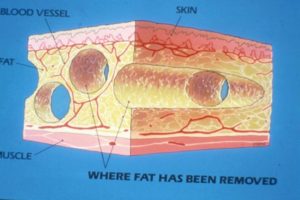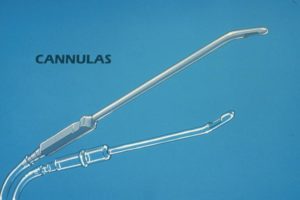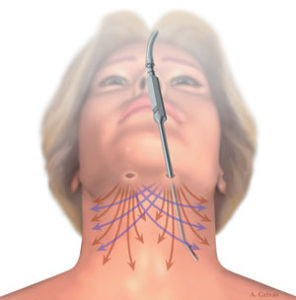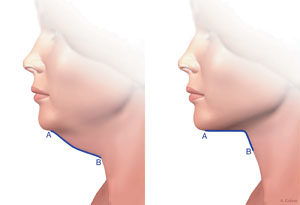Facial Liposuction
Commonly, patients with fullness in the neck area may not be candidates for a facial plastic surgery procedure—such as a facelift—due to medical conditions, high blood pressure, smoking, or blood-thinning medications. Furthermore, individuals may disqualify themselves from a facelift due to cost, unavailable recovery time, or emotional resistance to “such a big procedure.” Fortunately, patients who seek cosmetic improvement of a full or poorly-defined neck may still be able to achieve a more youthful neck contour with submental suction-assisted lipectomy— a procedure utilizing specialized liposuction techniques that can be less invasive than a facelift.
Our plastic surgeon, Joe Gryskiewicz, MD (“Dr. Joe”), has conducted an in-depth six-year study on liposuction of the neck without a facelift involving 132 patients who had undergone the submental suction-assisted lipectomy procedure (published in Plastic and Reconstructive Surgery, 2003, p. 1393, “ Submental Suction-Assisted Lipectomy without Platysmaplasty: Pushing the (Skin) Envelope to Avoid a Facelift for Unsuitable Candidates”). In the results of the study, neck liposuction without a facelift was observed to be a reasonable alternative for some cosmetic surgery patients in St. Paul or Minneapolis who were unable or unwilling to undergo a facelift.
Dr. Joe Gryskiewicz and Dr. John Luck offer the procedure at their practice for patients who wish to achieve an improved neck and facial profile without undergoing more invasive facial plastic surgery.
Who is a Candidate for Facial Liposuction?
The results of Dr. Joe’s study indicate that facial liposuction can be successful for older patients who wish to improve their neck profile. In particular, individuals with submental (under the chin) fullness who are in their forties, fifties, or early sixties and cannot—or do not want to—undergo a facelift or neck lift can benefit from this treatment. The most aesthetic improvement was seen in patients who exhibited:
- Localized fullness in the middle of the neck
- Adequate skin tone and elasticity
- Minimal skin or muscle laxity in the neck
Patients who experience a crepe-paper appearance of the skin, or deep horizontal creases in the neck, are not usually good candidates for this facial liposuction surgery. During a consultation, our plastic surgeons will listen to your cosmetic goals, review your medical history, and examine your anatomical indicators to determine whether the procedure can provide improvement for your concerns. When he sees you in person, he will discuss facial liposuction in greater detail. In general, we advise healthy older patients who are intent on reliable, definitive changes to undergo a facelift.
How is the Facial Liposuction Procedure Performed?
At your consultation, Dr. Joe and Dr. Luck may perform physical examinations, such as a “pinch test,” to determine whether facial liposuction is an appropriate treatment for your needs. Once it is confirmed that this treatment is well-suited to achieve your goals, facial liposuction is typically performed under either oral sedation and local anesthesia or general anesthesia. Different techniques may be employed depending on each patient’s anatomical indicators, but in general, a small surgical instrument called a cannula will be inserted through small incisions in the submental region and utilized to extract excess fatty deposits from the areas in which improvement is desired.




Learn more about this procedure by reading Dr. Joe’s article here: Submental Suction-Assisted Lipectomy without Platysmaplasty: Pushing the (Skin) Envelope to Avoid a Face Lift for Unsuitable Candidates
What is Recovery Like for Facial Liposuction?
In our plastic surgeons’ studies, facial liposuction was shown to involve a relatively smooth and accelerated recovery period when compared to other facial surgery procedures. Mild swelling or bruising may be experienced, but such reactions can be managed by oral pain medications. A chin strap will be worn after surgery to provide compression of the treated area and facilitate the healing process. Dr. Joe or Dr. Luck may also advise you to keep the head upright for a temporary period following surgery so there is no formation of a neck crease. Most patients can return to work and normal activities within one week. Exercise is allowed at two weeks.
To learn more about this innovative neck rejuvenation procedure, please call or text our office to schedule your consultation today.









